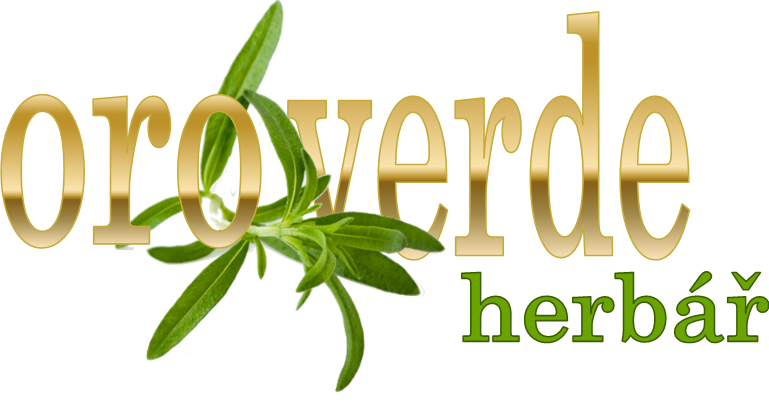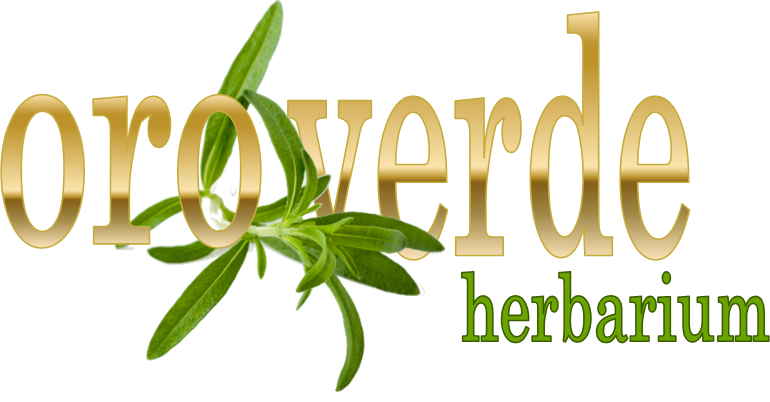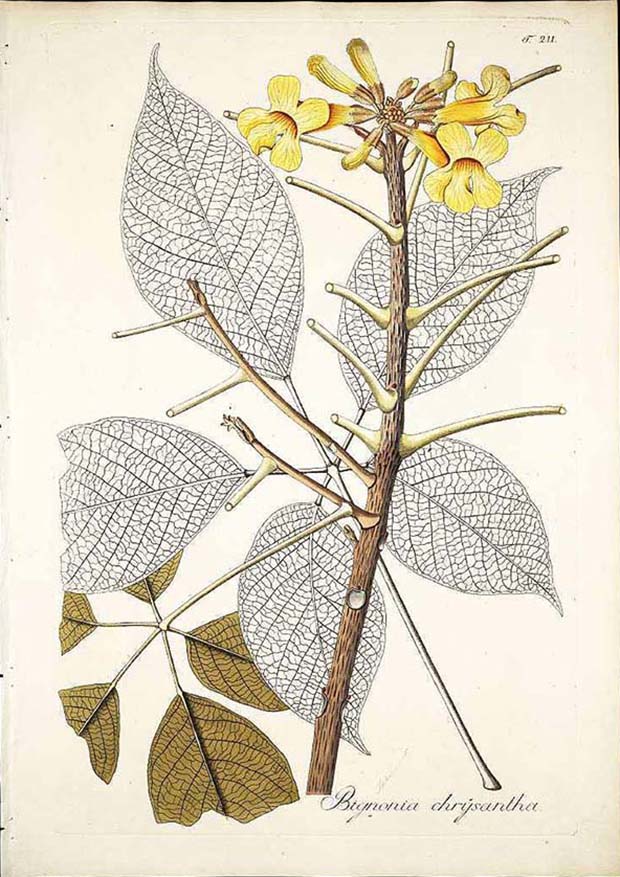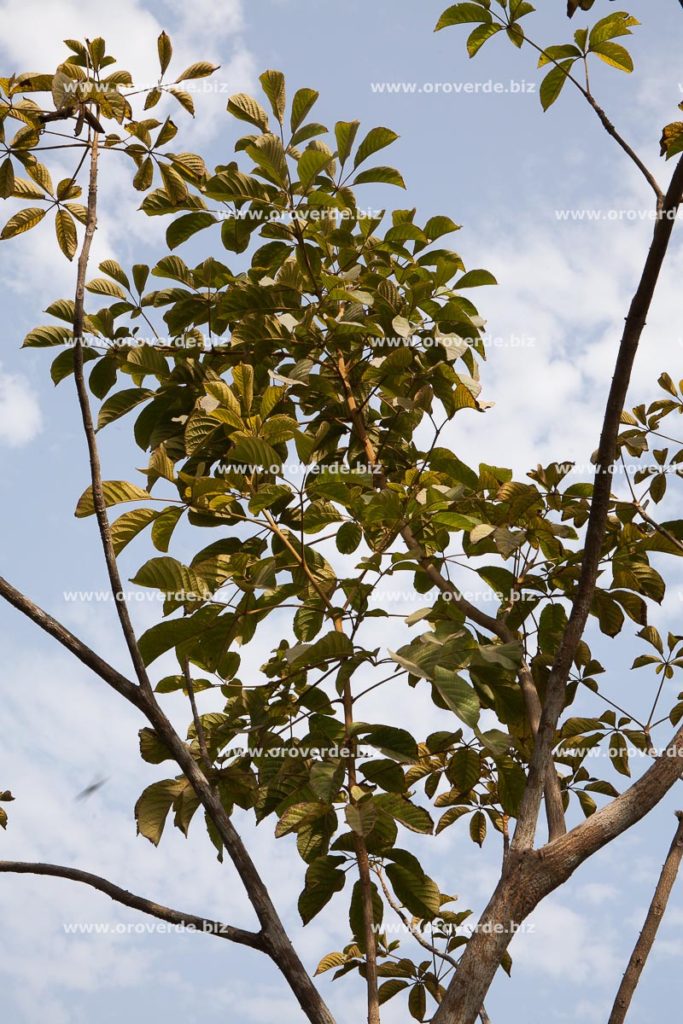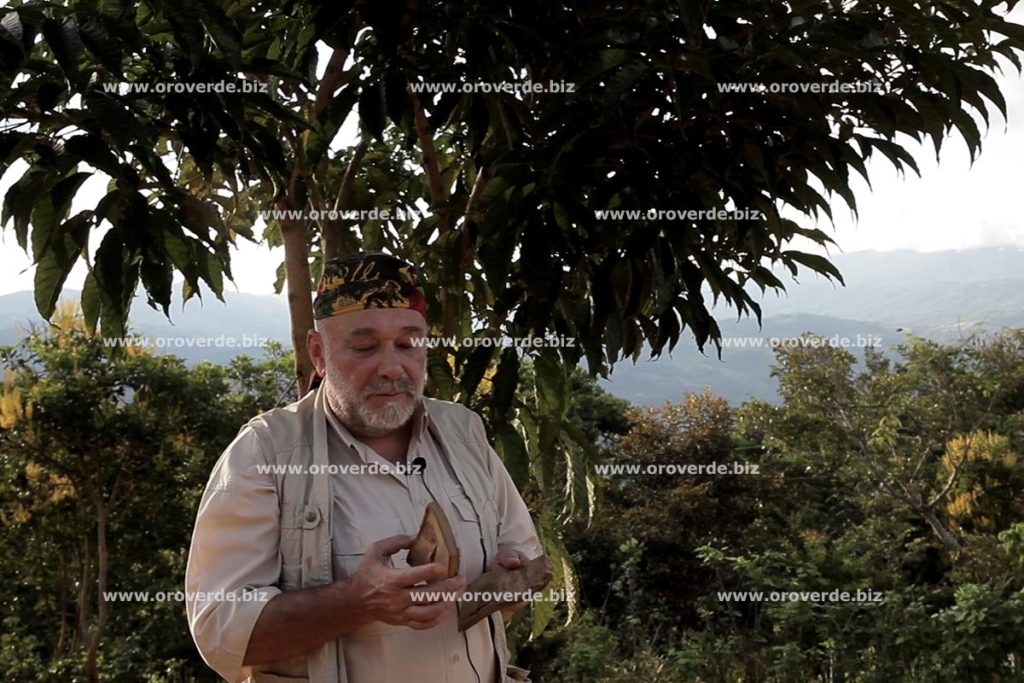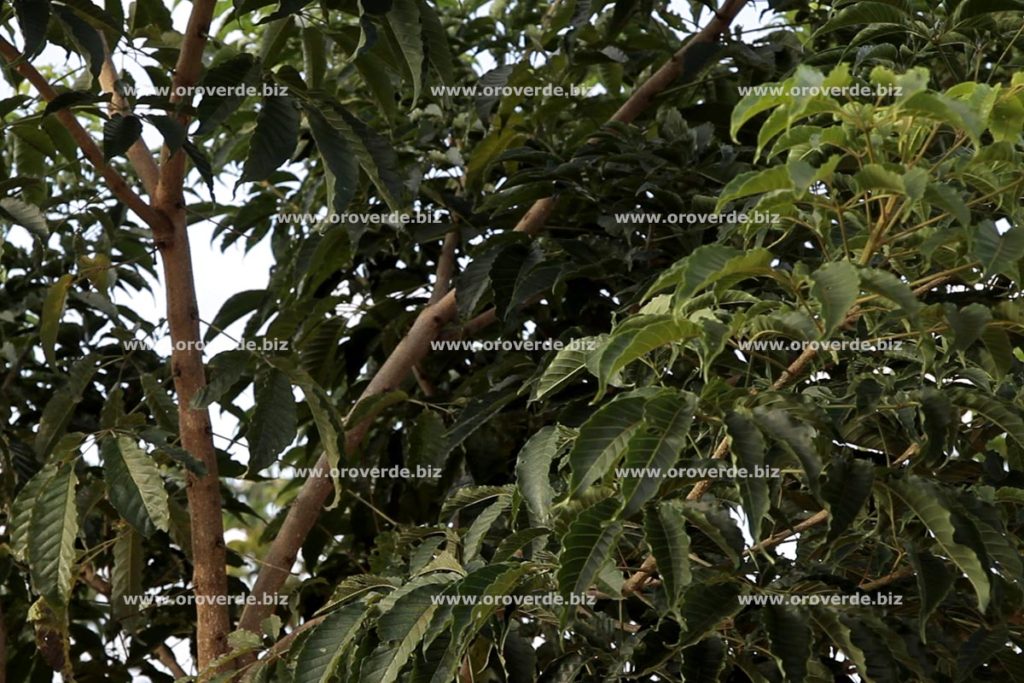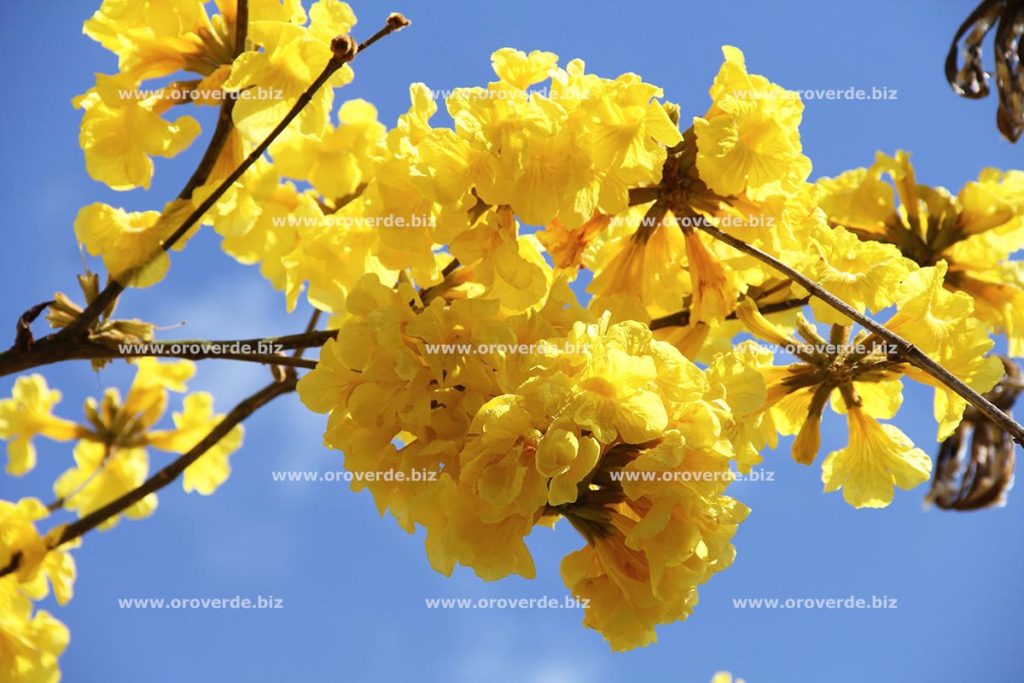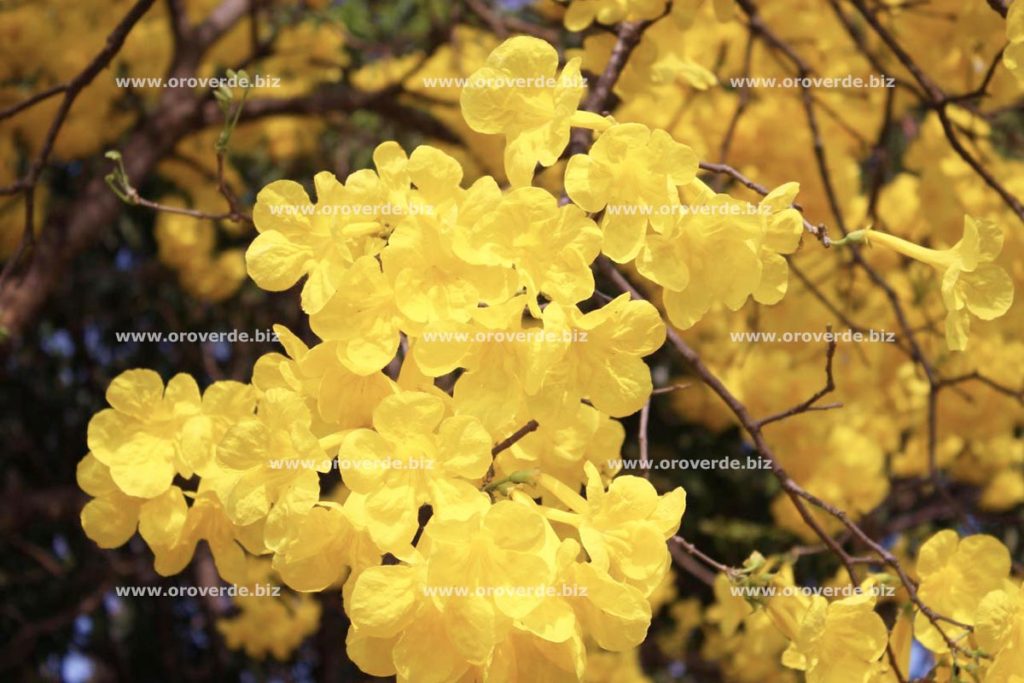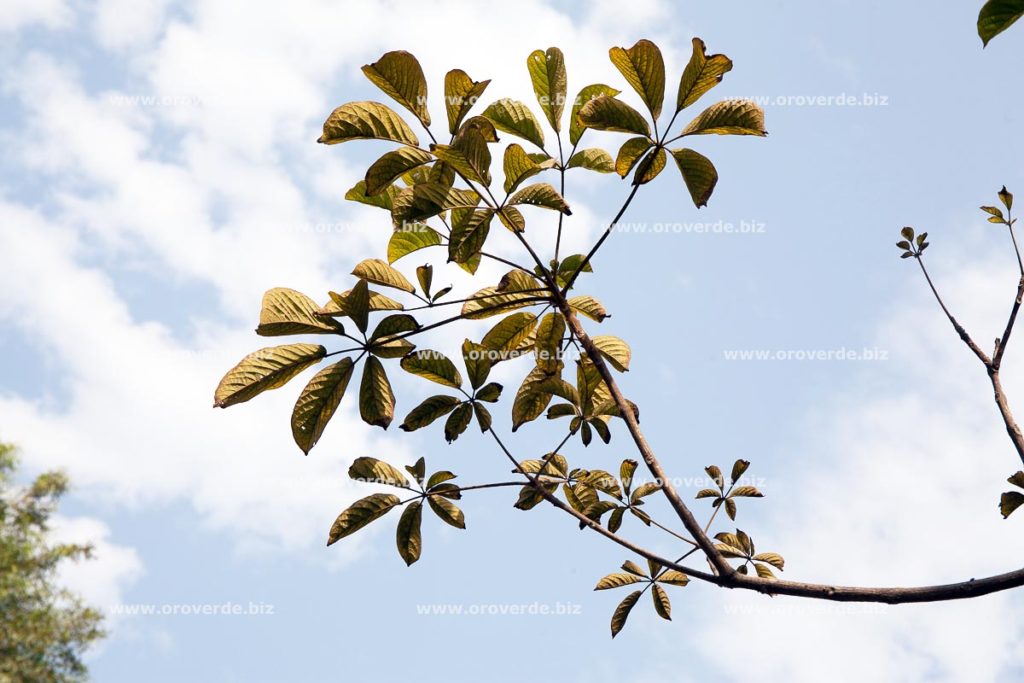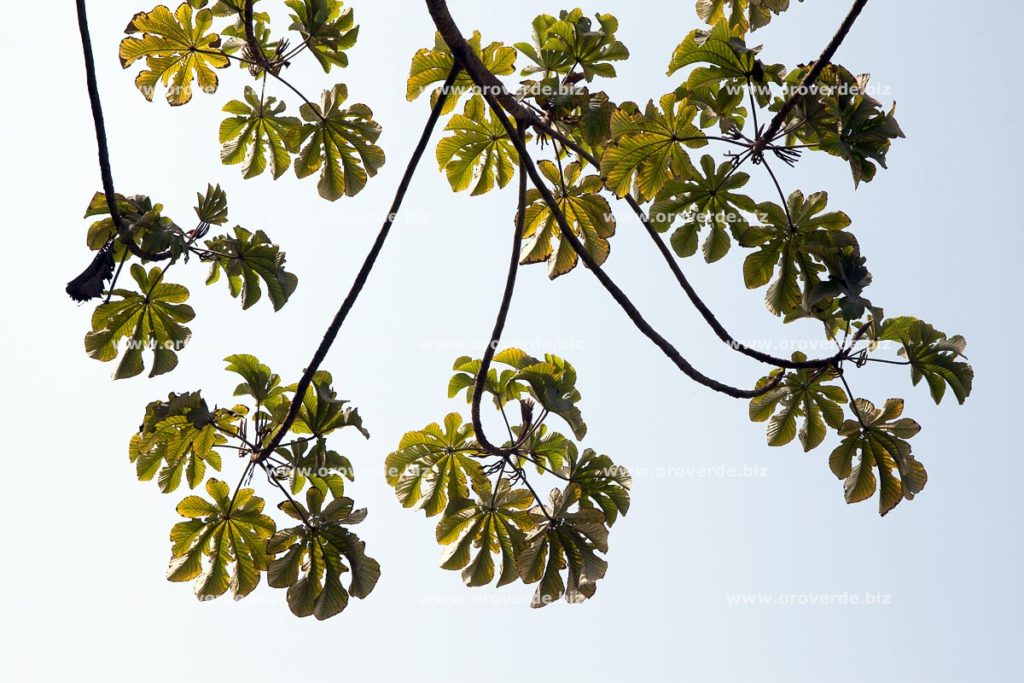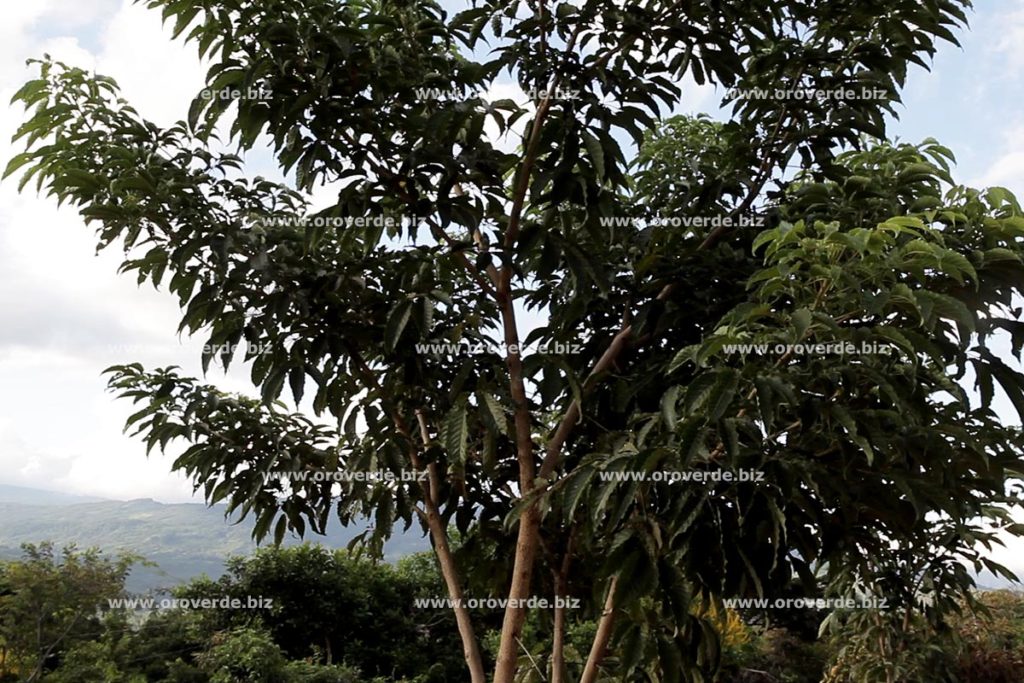It affects the following diseases:
Family: Bignoniaceae
Genus: Tabebuia
Species: serratifolia ( Vahl. ) Nich - negro chrysantha ( Jacq. ) Nich- amarillo
Common names:
Pau d’arco, abano, acapro, araguanei, chacaradanga, chonta, curarire, ipę, ipę roxo, lapacho, tahuari, taheebo, trumpet tree, ipę-contra-sarna, tabebuia ipę, tajy.
Part(s) used:
Bark (Cortex tabebuiae).
Description:
Tabebuia spp. is a big tree situated in some parts of south-american tropical rainforests. It usually grow up to the height of 150 feet and the trunk base is in average between 4-6 feet. The tribe Tabebuia include a big amount of big and beautifully blooming trees, e.g. serratifolia, ochracea,chrysantha and others, which have concretely big and lovely violet flowers. The tribes of Tabebuias are very common picture of the south-american country and cities, just for their beauty. Unfortunately they are also very popular for companies, which lumber the wood – due to very resistant and tough wood, which is commonly used on houses constructions even on ships and agricultural tools.
Tawari has a long, well documented history of the Indian rainforest natives usage who used several kinds of Tabebuia including T.serratifolia,T.chrysantha, T.heptaphylla, T.impetiginosa, T.rosea. There are indicia about using this trees also by Inks. In fact the clans living thousands miles away used also their treatment effects. Some of the native Indian tribes from tropical rainforests used the wood for manufacturing the bows and arrows and that is why they called this tree in breastsummer ,,bow,,. Indians from the Guarani and Tupi tribe call the tree ,,tajy,, what means to “have the strength and spirit,, and they use the crust on various medicine methods. The native use covers the stages as malary, anemia, respiratory problems, cold, cough, flu, mould infections, fever, artrididy, rheumatism, against the snakebite, bad blood circulation, syphilis, ulcers and cancer. With the description of Tabebuia tribe was engaged also the prime North-American botanist Dr. Alwyn Gentry who in his numerous works, dedicated to Bignoniaceae´s family, described more than 200 kinds of this tribe.
Nowadays Tawari is used all around the world as a vegetable medicine (phytofarmacum). In South America it is considered to be astringent, anti-inflammatory, antibacterial, fungicide and aperient, also used for ulcers, syphilis, gastrointestinal disorders, candidoses, cancer, diabetes, prostrate, obstructions and allergy. In the herbal medicine of the USA it is considered to be as a bearer of analgetic, anti-oxidate, anti-parasite, anti-microbe, fungicide, antivirus, anti-inflammatory, purgative and also anti-cancer features. It is used for external and internal treatment of fevers, infections, cold, flu, syphilis, cancer, respiratory problems, derm ulcers, dyzentery, gastro-interstinary problems of all kinds, artritidy, prostrate and circulate non-adequancies. Other, previously treated and registrated stages, are diabetes, lupus, ulcers, leucemy, allergy, hepatic problems, Hodgkins disease, osteomyelitidy, Parkinson disease and psoriasis. It is also a very popular instrument for treatment of leaven infections. In Europe it is used almost in the same way as in America.
The chemical components and active units of Tabebuia tribe are very well documented. Its usage and recorded results of the treatment of various kinds of cancer in the first decade of the sixtith years accelerated most of the research about this plant. Its against-cancer features were firstly fastened on the phytochemical called lapachol which is located in the crust and in the wood. In the study from the year 1968, lapachons proved a significant effect against cancer´s tumours of rats.
Sequentialy in the year 1974, NCI recorded that in the first stage of clinical tests lapachons did not banish the terapeutical effect without sequential side effects and that is why was interupted the cancer research. An another important researching group developed in 1975 lapachol which very effectively extended the life-span about more than 80% at mouses inoculated by leucemic cells. In the short study from the year 1980 at 9 patients with various kinds of cancer (liver, kidney, breast, prostate, cervix) recorded that the pure lapachol showed the ability to reduce the tumours and to reduce the feeling of pain caused by tumours and demostrated the complete remission at three patients.
Beside lapachol it consists at least 20 other active components to which are imputed various effects. It was clearly proved the often medical using in a big number of diseases caused by microorganisms which interprete us its wide range of using in nature medicine. The effects probably come from a bigger feed of oxigene on the local level, killing the bacterias, virus, mould and parasites. The anti-microbe characteristics were clinicaly verified in many studies and they show strong effects at gram-positive bacterias and moulds, including Candida, Staphylococcus, Trichophyton, Brucella, Tuberculosis, Pneumonie, Streptococcus and Shigella. These components further deported the significant anti-virus character at virus like Herpes I and II, Influenza, Poliovirus and Vesicular stomatitis virus. Its anti-parasite effects showed in malaria, Schistosoma, Trypanosoma and were clinically acknowledged. The crust samples proved the anti-inflammation activity against wide range of irritations. At derivates of furans (naftofurans), naftochinons, naftopyranons – summary + marked as lapachons was proved the significant cytotoxicity ( the inhibition of reverse transcriptose).
Tawari is an important source from tropical rainforest with many opportunities of using in herbal medicine. Unfortunately its popularity and using has always been guided with controversy thanks to various effect results that were caused by the missing quality control and confusing about which parts of the plant to use for processng and how to proceed in the preparation. There are several kinds of Tabebuia, also as other, completely unrelated tree kinds, which are exported from South America, e.g.,,Lapacho,, „Tawari“,„Pau´D Arco“ etc, which have just very low or no active ingredients from the studies of subjacented and used medical kinds. For example mahagon´s shavings from lumber mills in Brasil were packed and sold in the world as ,,Lapacho,, just because of the similar colour and characteristic smell of both woods. The chemical analysis realized in the year 1987 at twelve commercially approachable products of Lapacha proved that just one of them consisted lapachol in a sufficient quantity. Because of that fact that in the right bast there is about 2-7 % of lapachol, the study came to the result that other products can not be rated as genuine or that the processing or transportation damaged very much the concrete product. Most of the studies was directed on the heartwood of the tree, nevertheless most of the approachable commercial products are by lamber mills processed from the outer side of the tree-crust whilst heartwood of the tree is processed and prepared as the building material. At least 10 kinds of the trees Tabebuia are lumbered in the region of South America for building purposes what explaines the various kinds of crust which are sold like a healing product. Many users and practical doctors are not sufficiently introduced to the form of preparation and aplication. For the best results it is recommended (for selection of the right tree) to cook for 20 minutes on a very mild fire.
Contraindications:
Are not mentioned.
Side effects:
Consists substances that may cause an allergic reaction for very sensitive people.
Traditional enthomedicinal uses:
For reducing the blood sugar level, reduction of gassiness, treatments of bile stones, liver diseases, infection diseases and for a complete repair of organism, the bast is used as a draught prepared apr. 20-25 minutes on a very mild fire (under a cover) in the ratio 5 – 10:1000.
More information you can look on the site about ordinary preparation of the herbal remedies.
Phytoterapeutic properties:
Analgetic, anti-bacterial, fungicide,anti-inflammatory, anti-saprophytic, antioxidative, anti-mutagenous, anti-leucemic, antirheumatic, anti-carcinogen, antiviral, cytotoxic, immunostimulant, laxative.
Phytochemical composition:
Naftofurans, naftochinons, naftopyranons, xanthen derivates – guayin, guayacanin, antrachin derivates, prenylovated naftochins, acid.lapach ( 2-hydroxy-3-prenylnaftochinon ), lapachol, lapachon, lapachenol, leonurid, flavons, flavonoides, catechins, resin, tanstuffs, cyanogen, triterps, xanton. acid. ascorbic, betacaroten, riboflavin, niacin, thiamine, Al, Ca, Fe, Se, Mg, Na, Ph, K, Zn.
Source:
- Amazonian Ethnobotanical Dictionary, DUKE A.J., VASQUEZ R., C.R.C. Press, Boca Raton, USA, 1994, ISBN 0-8493-3664-3
- Diccionario enciclopedico de plantas utiles del Perú, BRACK EGG A., CBC – Centro de Estudios Regionales Andinos «Bartolomé de Las Casas», Cuzco, Perú, 1999, ISBN 9972-691-21-0
- Herbal secrets of the rainforest, TAYLOR L. , Prima Health a division of Prima publishing, CA, USA, 1998, ISBN 0-7615-1734-0
- The Healing Forest, SCHULTES E.R., RAFFAUF R.F., DioscoridesPress, Portland (OR), USA, 1992, ISBN 0-931146-14-3
- Vocabulario de los nombres vulgares de flora peruana, SOUKUP J. SDB, Editoria Salesiana, Lima, Perú, 1975
- Ziololecznictwo amazońskie i andyjskie, ŹUROWSKA K., TowerPress, Gdańsk, Polska, 2001, ISBN 83-87342-41-6
